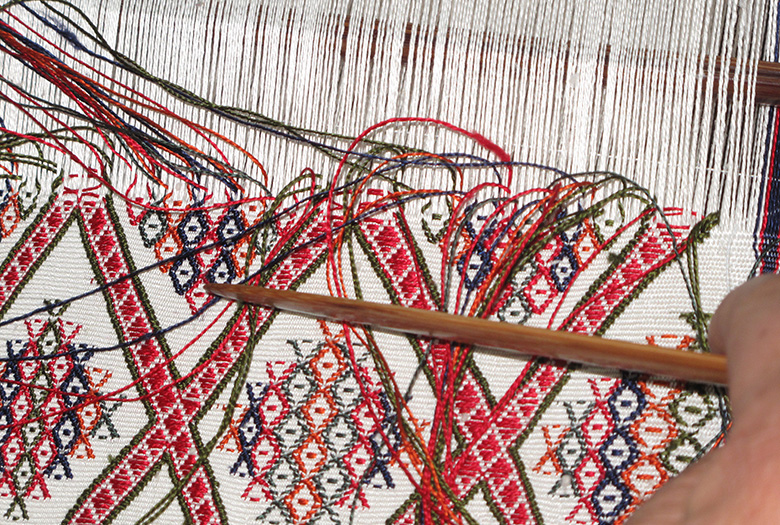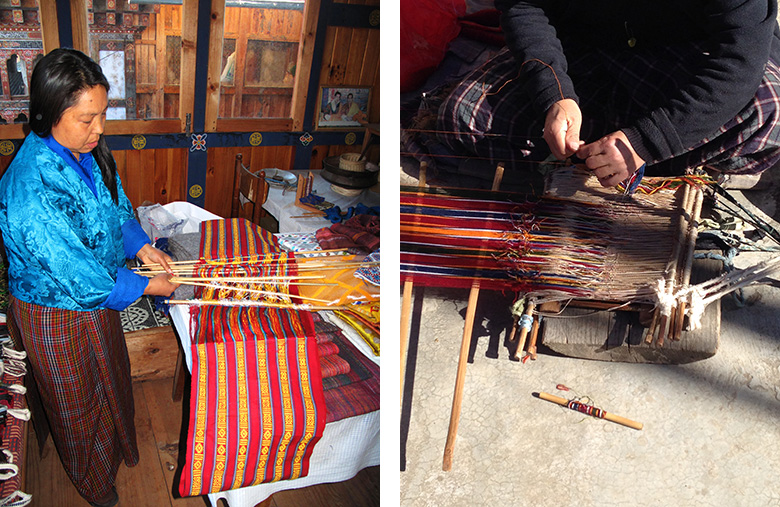The Art of Bhutanese Weaving
Textile experts widely acknowledge Bhutanese weaving to be among the most sophisticated and time consuming in the world.
Over half of Bhutan’s population is involved in weaving during the year. Cloth is integral to every aspect of Bhutanese culture, enmeshed in social hierarchy, wealth, political rank, and commerce. The gentle whir and thump of traditional back strap looms harmonizes with the sounds of daily life, from rushing river valleys to Himalayan foothills.
Bhutanese children, especially girls, learn the basics of weaving from an early age. Generations of Bhutanese women continue to pass down weaving techniques through oral tradition. However, the art is still at risk of disappearing in the shadow of urbanization and importation of cheaper commodities.
Weavers often work 10 to 12 hours a day,
generally producing no more than two inches of fabric
at a time due to the difficulty of the pattern.
The intricacy and complexity involved in Bhutanese weaving defies easy understanding. The level of handmade loom-work is unparalleled in modern times. Weavers often work 10 to 12 hours a day, generally producing no more than two inches of fabric at a time due to the difficulty of the pattern. Eastern Bhutan’s Aikapur textiles are the most technically challenging, with weavers knotting individual silk threads into motifs so intricate they resemble embroidery. It can take years to create a high quality gho or kira, the respective national garments for Bhutanese men and women.
The Bhutanese have a special word to describe this demanding process—Hingtham—which means “heart weaving.” In Bhutan, weaving is not merely a skill, it is a ritual of love and tenacity that comes from the heart.
Weaving is also a religious act in Bhutan’s Buddhist culture, with color and pattern selection amounting to forms of spiritual exercise or devotion. Many Bhutanese weavers use silk from wild silkworms, but Buddhism’s mandate of non-violence prohibits killing any fellow living creature, so the worms are allowed to escape.
In Bhutan, weaving is not merely a skill, it is a ritual
of love and tenacity that comes from the heart.
Bhutan’s modest resources result in remarkable compositions worthy of the world’s finest art collections and exhibitions. Bhutanese textiles deserve the echelon of publicity and praise accorded to contemporary works by prominent artists like Damien Hirst and Jeff Koons. It is extraordinarily rare to find contemporary textiles of this uniqueness, sophistication, and quality in Western society outside of museums.





